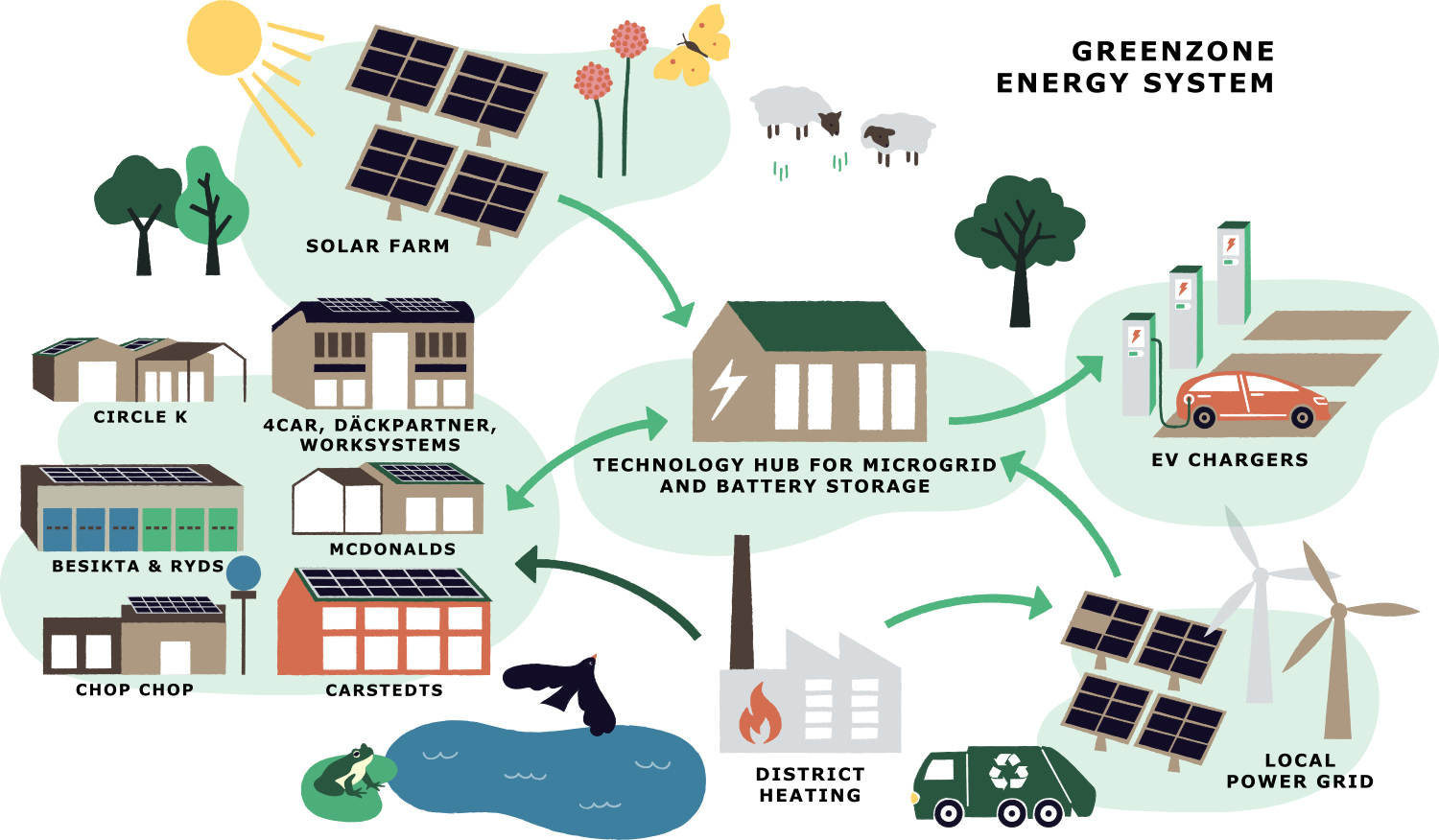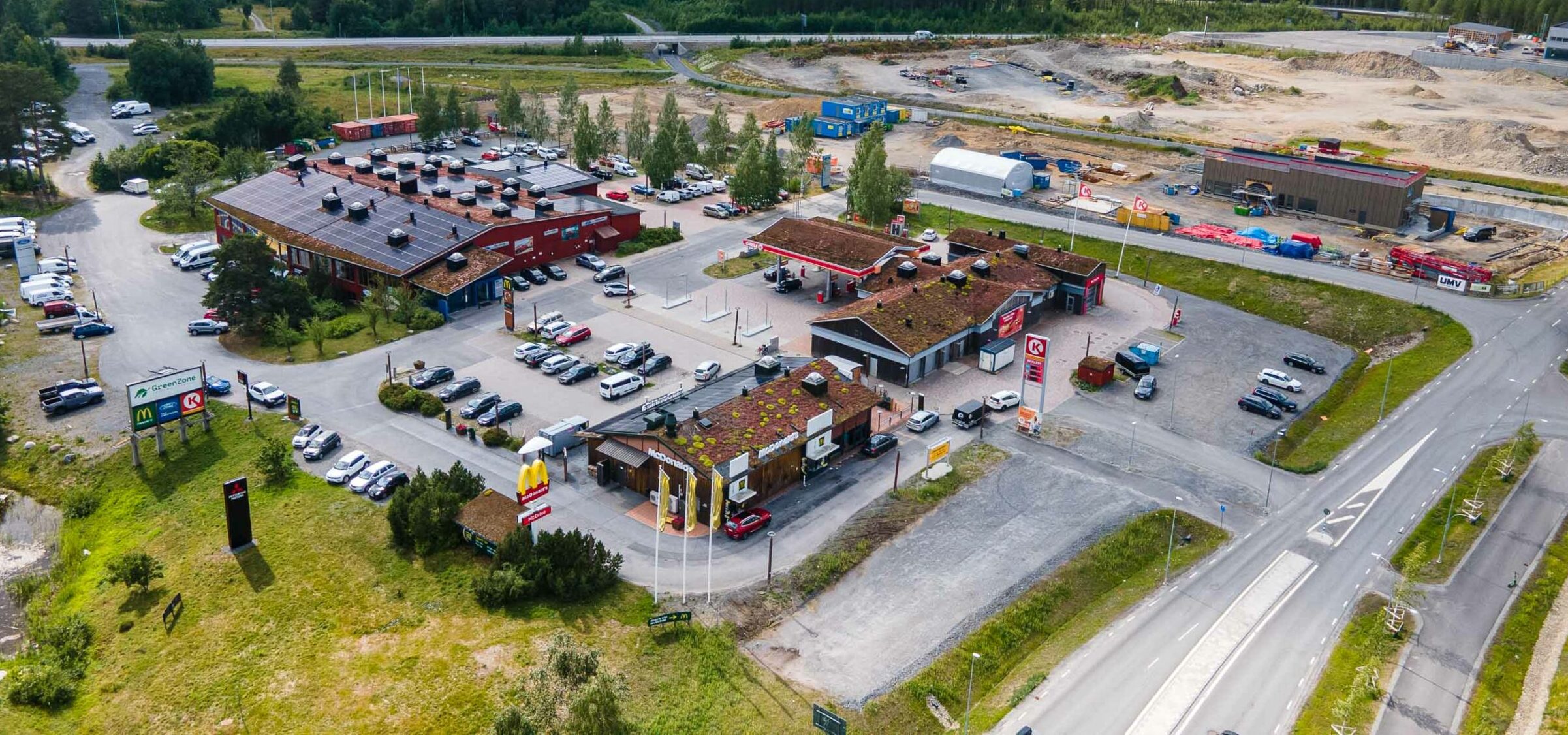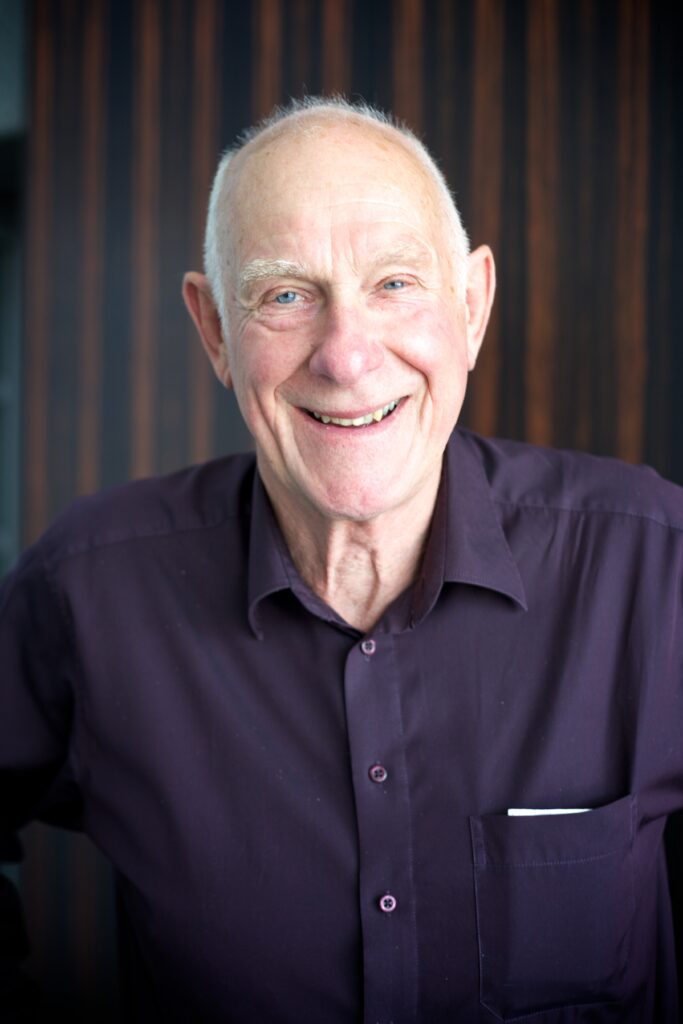A model for sustainable urban development
Today, cities account for over 70% of global carbon emissions and continue to be a source of air and water pollution, high resource consumption and land degradation. While progress is being made to reduce this impact, it is clear that we need to accelerate the transition to more sustainable cities. Change needs to come from multiple sources, and we aim to be part of the puzzle by demonstrating effective and sustainable system solutions that work in practice.
As we take the next step and create GreenZone 2.0, we’re taking everything we’ve learned along the way and shifting gears by focusing on the big challenges of today – the lack of renewable electricity and power. We are building with a focus on creating a sustainable whole with the next generation in mind. We want people to thrive and we invest in a wide variety of species with over 40 different species of flowers, grasses and shrubs that contribute to a rich and vibrant environment.

Energy optimization
Our well-insulated buildings are a key factor in minimizing our overall energy consumption. In addition to our own solar park, all buildings are optimized to maximize the number of solar panels and increase the amount of self-generated renewable electricity. On an annual basis, we will produce more electricity than the combined output of our operations, and we will use the surplus electricity to charge electric cars.
The buildings in the GreenZone are connected via a microgrid in one and the same energy system, which in combination with battery storage more than halves the power peaks compared to Umeå Energi, which can thus guarantee power to more businesses that want to establish themselves in the region.
District heating
Electricity is a high-quality form of energy with rapidly increasing demand, which means that there is already a power shortage in Sweden during certain parts of the year. Therefore, we are now replacing electric geothermal heating with Umeå Energi’s district heating to allow waste energy to heat our buildings. By choosing district heating, we also enable increased renewable electricity production for Umeå Energi.
Renewable materials
A key principle of our construction process is to maximize the use of renewable materials and create as much green space as possible to promote well-being. This means prioritizing materials such as wood, stone and sedum, over materials such as cement or steel. Where wood is not only recyclable, but also plays an active role by sequestering carbon throughout its lifetime. We have chosen to move walls instead of building new ones. If the wall already exists, why use materials to build new ones?
Choosing renewables is not only more sustainable, it also has aesthetic benefits, creating a more inviting and pleasant atmosphere. Something our beautiful wooden houses are a proud example of.
A sustainable whole
Our plant is a system that integrates different components to create a sustainable whole. Which is not as complicated as it sounds. Where many build in single sustainability solutions, such as solar cells or buildings made entirely of wood, we focus on developing scalable overall solutions to be inspired by.
We address the whole chain: from local energy supply to stormwater management, where our own pond both collects and purifies water in a natural way. We prioritize green areas and respect the conditions of the site, which for us means seeing the possibilities in the slightly hilly landscape. We choose natural materials and also attach great importance to the so-called details, such as choosing bolts and screws instead of nails, to be able to reuse the building material in the future. Something we started doing back in 1999.
The next-next generation in mind
Building sustainably requires both a long-term and a short-term perspective. If you have a clear vision that what we build today will work both today and in 50-100 years, you ask the right questions in the construction process.
It’s also about what kind of society we want to build. Should we continue to let cities grow through industrial areas with gigantic colossi where people are crowded in aisles between shops, or do we want to invest more in neighborhoods for people where the houses are smaller, the meeting places are more numerous and nature has a natural place in everyday life?
Social sustainability
At GreenZone, we have created a place where we want people to thrive, whether they are employees or visitors. One proof of our positive work environment is that we have a very low turnover of employees. People work here for a long time, we even have a handful of colleagues who have been with us for over 30 years.For example, we have maximized the green areas on the site in the form of meadows, sedum roofs and trees, which contribute to a calm and natural feeling. With wooden walls and living filters in several of the buildings, we also create a healthier and more comfortable indoor environment.
We want everyone who works here to feel involved and proud to be part of the GreenZone. That’s why all new employees in the area will also undergo training in environmental and climate issues.
Green spaces
The fact that people thrive on green and nature is nothing new. We strive to make it a matter of course to take nature and biodiversity into account in every new construction project. The differences in levels in the area have been preserved to create even more space for different types of vegetation. We are investing in a wide variety of species with over 40 different species of flowers, grasses and shrubs that contribute to a rich and vibrant environment.
Where it has been necessary for us to use green space, we have actively sought to compensate elsewhere, for example through the sedum roofs of buildings.
Lessons learned along the way
It’s been an eventful journey since we opened GreenZone in 2000. And when you’re working at the cutting edge of sustainable development, it’s crucial to be a bit brave. We want to push boundaries and see what’s possible, which means we haven’t always gotten the results we wanted. And these are lessons we are happy to share.
One example is when we installed vacuum toilets that required only half a liter of water per flush, compared to the usual eight. To further promote sustainable water use, we used local stormwater. Unfortunately, due to high iron content in the local bedrock, this resulted in an undesirable color tone in the water, which was not appreciated by customers and visitors. So we had to rethink and find a new solution. We continue to act as test pilots to ultimately inspire future construction projects and more sustainable cities.

Thank you Anders – your life’s work lives on
In the mid-90s, Per Carstedt had a dream of creating a sustainable neighborhood in Umeå. A vision that needed an architect with experience, courage and innovative ideas. The choice fell on Anders Nyquist, a pioneer in sustainable, social and eco-friendly architecture. Together they took on the challenge of developing one of the world’s most innovative and sustainable commercial building projects – the result was GreenZone, which still inspires the sustainable construction of the future.
Anders Nyquist dedicated his life to inspiring people and communities to build, think and live more sustainably. During his long career, he co-created everything from Sweden’s first eco-village, a girls’ school in Lumla, India, an eco-village in the Bahamas, and the remodeling of a school in Los Angeles commissioned by Will Smith. His work also extended to Bhutan, where he partnered with the READ foundation and introduced his EcoCycleDesign principle to the royal family. This led to the Queen Mother of Bhutan visiting his eco-village in Sundsvall to see his work up close.

Anders Nyquist, a pioneer in sustainable construction and social responsibility
Anders Nyquist Sustainability Prize
Green>one, together with the Carstedt Family Foundation for Sustainable Thinking, has now established the Anders Nyquist Sustainability Prize in Bhutan to honor his memory and support research and education in sustainable development. The prize is awarded annually to students at the Royal University of Bhutan and aims to inspire new generations to build a more sustainable future.
Read more about Anders Nyquist
Read more about the Sustainability Prize
